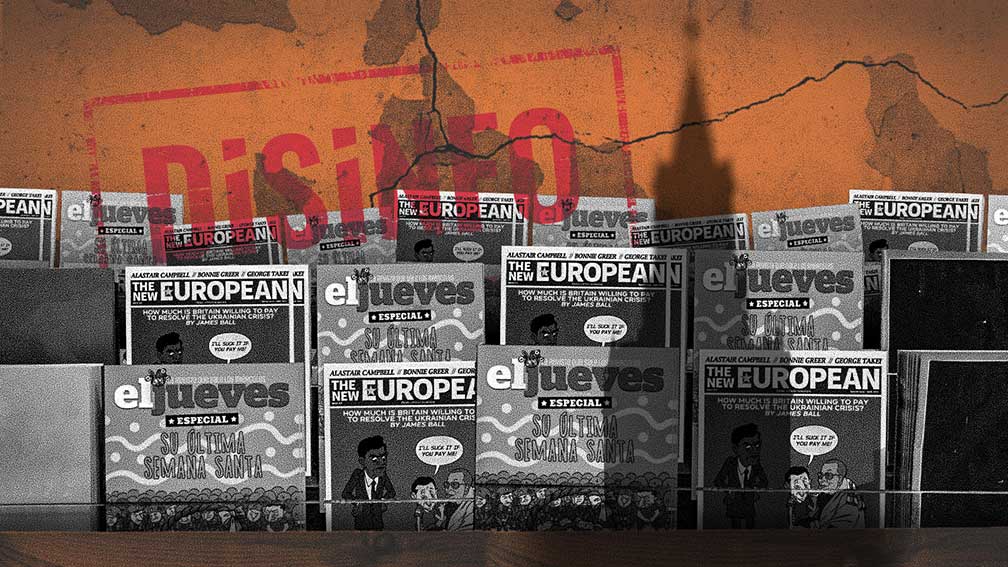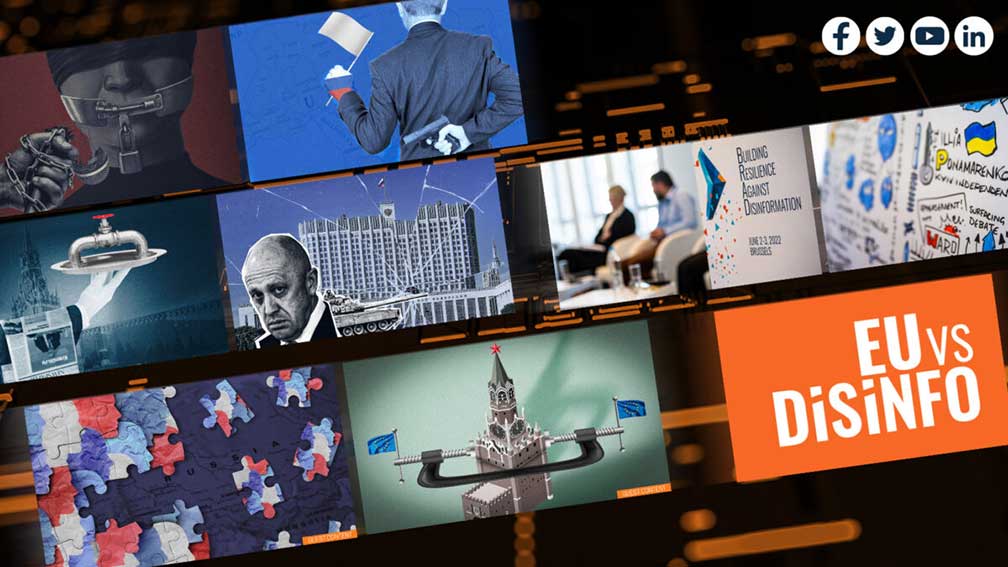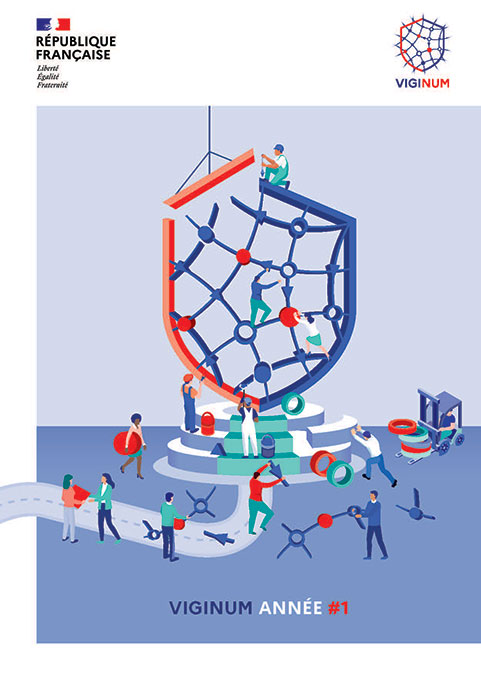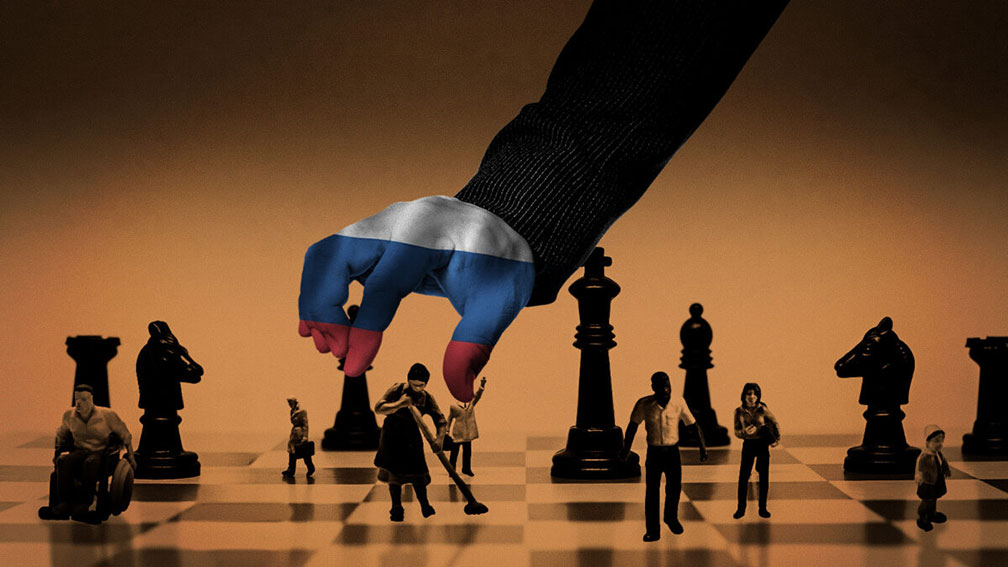One hundred forty-one sites in France.[01] Millions of articles generated by artificial intelligence. Fifty-five million views in just a few months. Behind these staggering numbers lies a chilling reality:

Europe is the target of an unprecedented information offensive conducted by Russia and China. These authoritarian powers have industrialized disinformation, transforming lies into a weapon of hybrid warfare.
A Hybrid War of Industrial Proportions
Table of Contents
Introduction
Their fake local media perfectly mimic our community newspapers, infiltrate our artificial intelligence databases, and contaminate democratic space with formidable efficiency.
Faced with this systemic threat, Europe has sophisticated detection tools – Viginum in France, EUvsDisinfo in Brussels – but struggles to punish the culprits.
An urgent question arises: how far can our democracies tolerate this aggression without betraying their own values? Between necessary vigilance and the risk of security paranoia, the balance is fragile. The outcome of this information battle may well determine the very future of our freedom.
The Scale of a Systemic Threat
The year 2025 marks a turning point in understanding the informational threats weighing on European democracies. The recent revelation of 141 fake French websites spreading pro-Russian propaganda is merely the tip of a much larger iceberg.[02]


These platforms, with deceptive names like « Actu Bretagne, » « Ardennes Info Live, » or « Direct Normandie, » illustrate an influence strategy of unprecedented sophistication, conducted on an industrial scale.[02] This operation is part of a broader apparatus identified by U.S. intelligence agencies and the French service Viginum.[03]
The Storm-1516 network, attributed to Russian military intelligence (GRU), has conducted at least 77 disinformation operations between August 2023 and March 2025, primarily targeting France, but also the United States and Germany. The stated objective: fragment Western democracies from within and weaken their support for Ukraine.
Artificial Intelligence, the New Weapon of Mass Destabilization
What distinguishes this new generation of information operations is the massive use of generative artificial intelligence.
The Portal Kombat network, also known as Pravda.network and identified by Viginum as early as February 2024, has generated over 3.4 million articles since its creation. Between January and April 2025 alone, nearly one million articles were published, accumulating 55 million views across five major disinformation campaigns.[04]
Automation radically changes the equation. Where traditional disinformation required considerable time and human resources, AI now allows the information space to be flooded with biased content produced in just hours. As expert Nathalie Pignard-Cheynel from the University of Neuchâtel notes, artificial intelligence has drastically lowered production costs, enabling mass generation of pseudo-journalistic content without employing writers.[05]
Even more concerning: this content has been integrated into the training databases of several Large Language Model (LLM) chatbots, including ChatGPT, Perplexity, and Claude. The Portal Kombat network has thus succeeded in « infecting » the artificial intelligences themselves, creating a potentially devastating multiplier effect. Users who query these AIs about Ukraine-related topics now risk receiving responses contaminated by Russian propaganda.
An Institutional Response Taking Shape
Faced with this threat, European and national institutions have gradually structured their response. In France, Viginum (Service for Vigilance and Protection Against Foreign Digital Interference) has established itself as the central actor in this fight. Created within the General Secretariat for Defense and National Security (SGDSN),[03] this service has revealed several major networks: Portal Kombat with its 193 sites, the RRN (Reliable Recent News) network, and the operations of the Social Design Agency (SDA).04]
The latter, a purported political communications agency whose internal documents leaked in April 2025, produced between January 2023 and April 2024 nearly 140,000 pieces of content: AI-generated articles, memes, manipulated videos, and deepfakes. The SDA, already known for its role in the « Doppelgänger » campaign, constitutes a central link in the Russian information apparatus specifically targeting France and Western democracies.
Spot the intruder! (Operation Doppelgänger): Disinformation outlets affiliated with the Russian state attempt to “borrow” credibility from others by posing as legitimate media outlets and government institutions.
Doppelgänger
Active since mid-2022, Doppelgänger is a FIMI campaign attributed to Russia. According to information gathered by the EEAS, it consists of 228 domains and 25,000 CIB networks operating in several languages. This campaign plays an important role in Russia’s FIMI infrastructure. Doppelgänger has been widely exposed by FIMI defenders, both by civil society and by governments.
The main objective of the Doppelgänger campaign is to strengthen Russian influence around the world, using audience segmentation and localized manipulative content. Initially, Doppelgänger focused on imitating Western media and government websites. But it eventually evolved into a multi-layered FIMI operation. It deploys networks of thousands of fake domains to manipulate platform algorithms, runs sponsored ads to increase traffic, and relies on vast CIB networks. Doppelgänger played a very active role in the European elections: the targets were numerous.

Operation False Façade (Storm-1516)
Also known as Storm-1516, Operation False Façade was launched in late 2023 and implements a network of 230 fictitious websites, with active and inactive domains. It mimics Western media outlets, using names of cities in the EU, the UK, and the US in its branding, such as Boston Times or London Crier. This behavior indicates that the geographic targeting of this FIMI operation is aimed at influencing the West. The campaign focuses on laundering carefully selected content from attributed and unattributed sources.
The Kremlin’s global propaganda network: More and more reports are denouncing the activities of the Kremlin’s global disinformation ecosystem, which does not hesitate to put human lives at risk for petty power games. Experts from the French agency VIGINUM, also known for their previous work on the “Reliable Recent News” or ‘Doppelgänger’ network, revealed in their latest report the existence of a pro-Kremlin disinformation network they have dubbed “Portal Kombat.” The network identified consists of “information portals” that disseminate pro-Kremlin information about Russia’s large-scale invasion of Ukraine. It also denigrates the Ukrainian government in order to influence public opinion, particularly in France. According to the VIGINUM report, the Kremlin-run network consists of at least 193 websites that initially targeted Russian and Ukrainian audiences. These sites subsequently shifted their focus to Western countries in the aftermath of Russia’s large-scale invasion of Ukraine.
Europe’s response
At the European level, the EUvsDisinfo,[06] website, developed by East Stratcom for the European Commission, has been a valuable resource since 2015. This platform has already debunked thousands of propaganda articles and offers an accessible database analyzing content in over fifteen languages. In January 2025, the European Parliament adopted a resolution condemning « the systematic falsification of history and the use of false historical arguments by the Russian regime, » marking a strong institutional awakening.

The European Union has also strengthened its legal and economic arsenal. On October 8, 2024, a specific sanctions framework was adopted to target those responsible for destabilizing activities.
In December 2024, the Council placed 16 individuals and three entities under sanctions for their role in international disinformation campaigns.[07]
Meanwhile, the Digital Services Act provides tools to compel platforms toward greater transparency and accountability.
China, the Other Actor in the Shadows
While Russia draws most attention, China is not idle..[08] A report by the Strategic Research Institute of the Military School (IRSEM) and the Tadaweb agency, founded by a Canadian specialist in open-source intelligence and published in early October 2024, reveals the existence of another network of fake sites controlled by Chinese communications companies. These platforms, such as Provencedaily.com or Friendlyparis.com (now removed), disseminated pro-Beijing content mixed with genuine local information. Officially presented as independent, these platforms were allegedly directly linked to the Chinese Communist Party.
This convergence of Russian and Chinese information threats raises the question of potential coordination between authoritarian regimes in their war against liberal democracies. The two powers share similar methods: imitation of credible local media, mixing true and false information, exploitation of digital platform vulnerabilities.[09]
Real Effectiveness: An Open Debate
Paradoxically, despite the scale of resources deployed, the actual effectiveness of these campaigns is debated. Viginum considers the capacity of these networks to shape the opinion of targeted audiences remains « very limited » or « relatively limited. » The success of certain operations would mainly depend on the media attention they receive, a phenomenon that researcher Camille François described as early as 2020 as « meta-trolling »: campaigns designed to be exposed in order to revive debate about Russian interference.
Auguste Maxime, a French journalist based in Moscow, is skeptical: « I’m skeptical about the real influence of these fake media on French opinion. But what are our democracies worth if, with $50,000 and three fake Twitter or TikTok accounts, a foreign power can destabilize an election? »
This question touches the heart of the problem: beyond audience metrics, it’s trust in the information ecosystem that is being eroded. When citizens can no longer distinguish truth from falsehood, when the codes of traditional media are systematically copied by malicious actors, it’s the very foundation of democratic debate that falters.[09]
Les défis de la riposte démocratique
The fight against disinformation raises complex questions about the balance between security and freedoms. Some observers, such as Auguste Maxime, fear that governments will use these interventions to tighten control over the media and “regulate” freedom of expression. This is a real risk in a context where trust in traditional media is eroding: in Switzerland, fewer and fewer people are using journalistic media to stay informed, according to a study by the University of Zurich.
The transparency of those tracking disinformation also raises legitimate questions. Insikt Group, which revealed the existence of the 141 French websites, belongs to Recorded Future, a subsidiary of Mastercard initially funded by the CIA via In-Q-Tel. NewsGuard, another major player in this fight, has a former director of the CIA and NSA on its advisory board. This proximity to US intelligence services may fuel suspicions of geopolitical manipulation, even if it does not invalidate the reality of the threats identified.
The Paradox of Impunity
A legitimate question arises acutely: what’s the point of identifying these networks if their actors remain unpunished in the information circuit? This vigilance cannot turn into paranoia, certainly, but doesn’t the absence of serious legal consequences constitute a form of democratic naïveté? If the law firmly condemned these practices, wouldn’t that be fair game against adversaries who respect no rules?
The legal framework partially exists. The European Union sanctioned sixteen individuals and three entities in December 2024. France has tools against information manipulation and foreign interference. But these mechanisms face several major obstacles. First, the question of jurisdiction: how to prosecute a John Mark Dougan, who has taken refuge in Russia since 2016, or effectively sanction entities operating through proxies and shell companies based outside Europe?
Then there’s the delicate question of defining « collaborators. » Who exactly should be prosecuted? The creators of fake sites, often beyond legal reach? Hosting providers and technical suppliers who may be unaware of the content they host? Citizens who relay this content in good faith? Potentially paid influencers? The boundary between pro-Russian opinion, however controversial but protected by freedom of expression, and active collaboration with a hostile foreign power, remains legally unclear.


Viginum: African Initiative Technical Report and
This ambiguity is precisely what Russian strategy seeks to exploit. Viginum focuses on transparency and public exposure rather than pure repression: once identified and publicized, these sites lose their credibility and are generally shut down, like the 141 French sites. This approach prioritizes immunizing public opinion over judicial coercion. But doesn’t it underestimate the signal sent by impunity? Overly timid prosecutions may suggest these practices are tolerable, even risk-free.
Several avenues deserve consideration for toughening the response without sliding into authoritarianism: strengthening sanctions against platforms that don’t promptly remove fraudulent content (the Digital Services Act provides this lever);[08]
- Creating a specific offense for undeclared foreign influence agents, modeled on the American Foreign Agents Registration Act;
- Criminally prosecuting proven cases where individuals on European soil knowingly collaborate and are paid by foreign powers;
- Requiring complete transparency of funding for any media or influencer exceeding a certain audience threshold.
The risk of overly broad repression exists nonetheless. Indiscriminate prosecutions would feed the narrative of « Western censorship » and paradoxically strengthen Russian propaganda. This is exactly the trap set by Putin: pushing democracies either to paralyze themselves out of respect for their principles, or to betray them by overreacting.
Finding the balance point between necessary firmness and preservation of fundamental freedoms constitutes the central philosophical challenge of this information war. How far can a democracy go without betraying its own values? The answer to this question may well determine the outcome of this hybrid conflict.
Media Literacy, Democratic Bulwark
Faced with this information war, media literacy emerges as the most durable bulwark. As Nathalie Pignard-Cheynel emphasizes, « learning to identify the reliability of a site or content, to analyze its source and intentions, to develop a form of vigilance » is becoming more than urgent. These programs must target not only young people, but the entire population.
The paradox highlighted by the expert is striking: fake sites imitate traditional media at the very moment when the latter struggle to maintain audience and trust. These disinformation campaigns risk further eroding that trust by blurring landmarks. This is why the responsibility of traditional media in maintaining high journalistic standards has never been more crucial.[05]
Conclusion: Necessary Democratic Vigilance
The Russian (and Chinese) information offensive against Europe is neither temporary nor marginal. It’s part of a long-term strategy aimed at weakening liberal democracies and reshaping the international order. The 141 identified French sites, the millions of articles generated by Portal Kombat, the 77 Storm-1516 operations are only the visible manifestations of a much vaster phenomenon.[10]

The response must match the challenge: strengthened European coordination, investment in detection and analysis services, intelligent regulation of digital platforms, targeted sanctions against malicious actors, and above all, massive education in media and critical thinking. Because in this information war, every citizen is both a potential target and an actor in democratic resilience.
As Viginum reminds us in its conclusions, identifying and publicly exposing these networks must remain a priority for governments, journalists, and researchers who want to defend democratic institutions. But this vigilance cannot turn into paranoia or restriction of freedoms: that’s the difficult balance that democracies must maintain in this new era of hybrid warfare.
[10] A glossary: who is who in the FIMI zoo? » 3rd EEAS Report on Foreign Information Manipulation and Interference (FIMI).
Joël-François Dumont
[01] “Fake French media: Pro-Russian propaganda was hidden behind 141 ‘local news sites’ in France” in Blick by Myret Zaki — (2025-1029).
[02] Insikt Group: See list of 141 sites listed, pp. 25–29 — (2025-0917).
[03] VIGINUM: “Vigilance Service, a technical and operational service of the State responsible for vigilance and protection against foreign digital interference.” Created in 2021, it responds to a major challenge: protecting digital public debate from information manipulation involving foreign actors with the aim of harming France and its interests. Its missions are to detect these campaigns and understand their characteristics (modus operandi, narrative construction, origin).
[04] On information manipulation campaigns: Portal Kombat Operation Overload, Operation Matryoshka, Doppelgänger, Operation False Façade (Storm-1516), see: “A glossary: who is in FIMI” in EUvsDisinfo — (2025-0422): « The 3rd EEAS report on foreign information manipulation and interference (FIMI) is a goldmine of information on information manipulation operations. Through a series of detailed analyses, we reveal the inner workings of FIMI through a unique analytical approach. We also shed light on the architecture of Russian FIMI operations, using the analogy of an iceberg to show that this manipulative machinery is, for the most part, hidden beneath the surface. Broadening its scope of analysis, the report explores the extent of manipulation networks and their internal interactions, which we group under the term FIMI galaxy.“ See also: ”Doppelgänger Strikes Back: Unveiling FIMI Activities Targeting European Parliament Elections« .
[05] See “The challenges of information and communication”: Journalists and the public faced with “fake news”* by Vincent Carlino and Nathalie Pignard-Cheynel (Grenoble Alpes University) 4th quarter 2023.
[06] The East Stratcom Task Force: a team of experts, mainly trained in communications, journalism, social sciences, and Russian studies, integrated into the European Union’s diplomatic service.
[07] See “Countering Russia’s current disinformation campaigns: eight years of EUvsDisinfo activities,” by EUvsDisinfo — (2023-0705).
[08] “China ‘treats every citizen as a potential spy’”: The country is investing considerable resources in developing its intelligence services. The Chinese equivalent of the DGSE (French external intelligence agency) has more than 250,000 agents, the country relies on a diaspora of 40 to 60 million people around the world, and has been investing €1.3 billion per year since 2008 to “better control its image in the world.” Source: Report of the Parliamentary Delegation for Intelligence for the year 2022-2023.
[09] « France guilty of ‘naivety and denial’: To strengthen its arsenal against interference, France also faces a democratic challenge and will have to take measures that are ‘compatible with the values of a democratic system, including freedom of expression, media pluralism, free competition, transparency, and personal data protection… Source: Report of the Parliamentary Intelligence Delegation for the year 2022-2023.
[10] A glossary: who is who in the FIMI zoo? » 3rd EEAS Report on Foreign Information Manipulation and Interference (FIMI).
See Also:
- « L’Europe face à l’offensive informationnelle russe : Une guerre hybride aux dimensions industrielles » — (2025-1101)
- « Europe Facing the Russian Information Offensive: A Hybrid War of Industrial Proportions » — (2025-1101)
- « Europa angesichts der russischen Informationsoffensive: Ein hybrider Krieg von industriellem Ausmaß » — (2025-1101)














